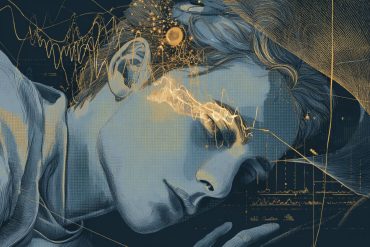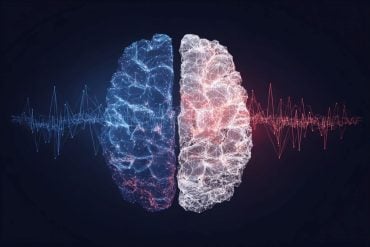Summary: A groundbreaking study used a brain-machine interface to explore how intentions, actions, and their outcomes are temporally linked in the human brain. By recording single-neuron activity from a paralyzed individual with implanted electrodes, researchers enabled intentional hand movement through machine-learning-driven muscle stimulation.
The study found that when actions are intentional, people perceive them as occurring faster, a phenomenon known as compressed temporal binding. This discovery sheds light on the neural encoding of intention and contributes to the ongoing debate over free will by showing that subjective intention aligns with motor cortex activity.
Key Facts:
- Temporal Binding: Intentional actions are perceived to occur sooner than involuntary ones.
- Neural Encoding of Intent: Single neurons in the motor cortex reflect the experience of intention.
- Brain-Machine Integration: The study leveraged implanted electrodes and machine learning to decode and act on motor intentions in real time.
Source: PLOS
Researchers led by Jean-Paul Noel at the University of Minnesota, United States, have decoupled intentions, actions and their effects by manipulating the brain-machine interface that allows a person with otherwise paralyzed arms and legs to squeeze a ball when they want to.
Published in the open-access journal PLOS Biology on April 17th, the study reveals temporal binding between intentions and actions, which makes actions seem to happen faster when they are intentional.
Separating intentions from actions was made possible because of a brain-machine interface. The participant was paralyzed with damage to their C4/C5 vertebrae and had 96 electrodes implanted in the hand region of their motor cortex.
As they tried to squeeze a ball, a machine-learning algorithm looked at all the signals coming to the electrodes, and learned which activity pattern meant “squeeze” (close) and which meant “relax” (open).
Once learned, the machine could send an electrical signal to the appropriate hand muscles, allowing the participant to squeeze the ball, which then delivered a sound. On average, the participant perceived the time from intention to action to be 71 ms, which was slightly faster than the real time duration.
The heart of the study involved systematically removing each part of the chain of events. By randomly stimulating the participant’s hand to squeeze the ball, the researchers were able to eliminate intentions. In this case, actions were judged to occur much later.
On the other hand, when the participant tried to squeeze the ball, but actions were prevented by not stimulating the hand, intentions were perceived to happen much earlier if the sound was still played after the machine decoded the intention. Perceived timing did not change if the sound was not played.
These results indicated a compressed temporal binding between intention and action. Recordings from the electrodes, which normally cannot be done in humans, showed that the motor cortex encodes these intensions.
The authors add, “The work builds on a long tradition trying to establish the temporal relationship between moving, the onset of the subjective experience of intending the movement, and the neural correlates of this intention.
“While there have been quite a number of non-invasive studies on this topic, only a single study prior to our was able to measure single neurons – the gold-standard in neuroscience – in humans while asking them to report when they first ‘felt the urge to move’.”
The authors continue, “This prior work (Fried et al., 2011) showed that certain brain areas (all in the frontal cortex) know about the intention to move up to a second prior to when we experience that intention. You can imagine this created quite the debate regarding whether humans have free will or not.
“Our study contributes to this debate by recording single neurons in the primary motor cortex. We show that firing of neurons in this area (the last cortical node before the spinal cord, which ultimately elicits movements) co-occur with the subjective experience of intending a movement.”
The authors conclude, “The work would have not been possible without expertise from a number of contributors, including neurosurgeons, neuroengineers and neuroscientists, among others.”
Funding: AS is supported by the Swiss National Science Foundation (grant PP00P3 163951/1; www.snf.ch), OB is supported by the Swiss National Science Foundation (www.snf.ch) and the Bertarelli Foundation (https://www.fondation-bertarelli.org/). MB was supported by the Craig H. Neilsen Foundation (Grant number: 651289; chnfoundation.org) and State of Ohio Research Incentive Third Frontier Fund (https://development.ohio.gov/business/third-frontier-and-technology). JPN is supported by NIH NINDS R00NS128075 (https://www.ninds.nih.gov/) and an Alfred Sloan Research Fellowship (https://sloan.org/).
The funders had no role in study design, data collection and analysis, decision to publish or preparation of the manuscript.
About this neuroscience and neurotech research news
Author: Claire Turner
Source: PLOS
Contact: Claire Turner – PLOS
Image: The image is credited to Neuroscience News
Original Research: Open access.
“Neuronal responses in the human primary motor cortex coincide with the subjective onset of movement intention in brain–machine interface-mediated actions” by Jean-Paul Noel et al. PLOS Biology
Abstract
Neuronal responses in the human primary motor cortex coincide with the subjective onset of movement intention in brain–machine interface-mediated actions
Self-initiated behavior is accompanied by the experience of intending our actions.
Here, we leverage the unique opportunity to examine the full intentional chain—from intention to action to environmental effects—in a tetraplegic person outfitted with a primary motor cortex (M1) brain–machine interface (BMI) generating real hand movements via neuromuscular electrical stimulation (NMES).
This combined BMI-NMES approach allowed us to selectively manipulate each element of the intentional chain (intention, action, effect) while probing subjective experience and performing extra-cellular recordings in human M1.
Behaviorally, we reveal a novel form of intentional binding: motor intentions are reflected in a perceived temporal attraction between the onset of intentions and that of actions.
Neurally, we demonstrate that evoked spiking activity in M1 largely coincides in time with the onset of the experience of intention and that M1 spike counts and the onset of subjective intention may co-vary on a trial-by-trial basis.
Further, population-level dynamics, as indexed by a decoder instantiating movement, reflect intention-action temporal binding.
The results fill a significant knowledge gap by relating human spiking activity in M1 with the onset of subjective intention and complement prior human intracranial work examining pre-motor and parietal areas.







